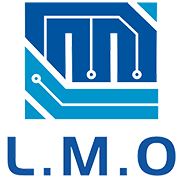In the process of SMT patch processing, there will be certain requirements for the PCB board, and the PCB that meets the requirements of the processing equipment can be processed and welded normally. Therefore, in order to ensure the successful completion of SMT patch processing, the requirements of SMT patch processing for PCB design mainly include external PCB size, PCB appearance, PCB process edge, PCB thickness, PCB positioning hole, PCB reference point (Mark point), PCB curvature, paneling method, PCB pads, etc. Today, I will explain to you the specific parameters of SMT chip processing for PCB board design requirements.
1. PCB size
PCB width: ≥50mm, <460mm; PCB length ≥50mm; <510mm; (including process edges)
2. PCB appearance
The appearance of the PCB is generally rectangular, and the best aspect ratio is 4:3 or 3:2. If the aspect ratio is too large, it may cause the PCB to warp diagonally. It is not easy to weld the entire SMT assembly line. It is recommended to design the PCB size to be standardized, except for special cases.
3. PCB process side
In the SMT production process of PCB, the assembly line equipment is completed by rail transmission. In order to ensure the fixing of the PCB, a size of 5mm is generally reserved on the side of the transmission rail (the long side of the PCB) to facilitate the fixing of the equipment.
4. PCB thickness
The PCB thickness range is generally 0.3~5mm. Conventional PCB thickness is 1.6mm, and large boards are generally around 2mm. The special FPC soft board is generally 0.3~0.8mm, at this time, it is necessary to open the mold and mount the fixture to assist in the patch processing.
5. PCB positioning hole
Some SMT equipment (such as placement machine) adopts the method of hole positioning. In order to ensure that the PCB can be accurately fixed on the equipment fixture, the PCB is required to reserve positioning holes. A hole diameter is Φ3mm-Φ5mm. SMD components are not allowed within 5mm around the positioning hole. At present, the SMT placement machine in the entire industry is basically eliminated by fixing the PCB patch through the positioning hole.
6. Reference point (Mark point)
The reference point, also called Mark, is to ensure that each device in the patch can accurately locate and identify the PCB pad. So Mark point is very important for SMT production. Generally, the Mark point is marked with metal, the diameter is 1.0mm-1.5mm, and there cannot be the same metal within 5mm of the surrounding diameter. The color of the Mark point should be clearly contrasted with the color outside the surrounding 5mm area. The general shape of Mark point is circle, diamond, square, {cross} shape.
7. PCB curvature
Can accept the maximum degree of upward bending of PCB: <1.2mm, degree of downward bending: <0.5mm, PCB distortion: maximum deformation height ÷ diagonal length <0.25.
8. PCB panel design
When the size of the PCB veneer is less than 50mm*50mm, it must be assembled. The panel design is adopted to facilitate SMT patch and post-processing production to improve production efficiency and equipment utilization. V-shaped grooves, stamp holes, etc. can be used between the panels. If a PCB with a size of <50mm×50mm has been produced, it can only be done by opening the mold to make the imposition jig, which will increase the cost a lot.
9. PCB pad design
There are no through holes or vias on the PCB pads. If there are through holes or vias, the solder paste will flow into the holes when soldering melts, resulting in less tin on the device or pad, resulting in less empty solder and less tin to form poor solder joints.
When designing a PCB, you should understand some knowledge of SMT chip processing in advance, so as to ensure the smooth production of products. Avoid unnecessary losses during chip processing.
Post time: Apr-28-2022
